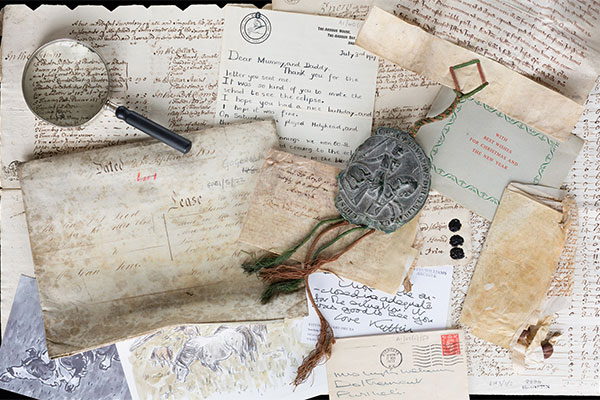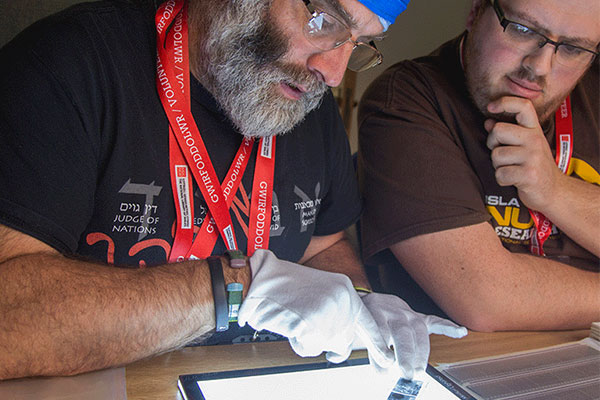Background
Manuscripts were usually made of sheepskin or goatskin which was cleaned, stretched and dried to create parchment sheets. These sheets would be folded to create a quire (or gathering); four sheets made eight leaves (or bifolia) each with a recto and a verso side depending on the flesh or hair side of the parchment. To create a manuscript volume, several quires would be bound together. This was an expensive and time-consuming process, and the need to avoid wasting parchment coupled with natural imperfections in the material meant that manuscript pages were rarely perfectly even. So before writing on a page, the scribe would usually prick holes in the outer edges and rule each page with horizontal and vertical lines to maintain consistency. Spaces would be left for the insertion of decorations, as the scribe and the decorator were not always the same person.
Numerous different colours were used for decoration, which could be made from natural sources varying in rarity and cost. The ink used for text in medieval Wales could be oak gall-based (or gallotannic) ink, which presented a dark brown hue, but many other colours could be made from powder bases, such as red and orange from red lead (or minium), white from white lead, green from copper salts, and blue from lapis lazuli. These would all be mixed with a binding agent such as gum Arabic. Don’t try this at home though – many of these paints were poisonous! They were also expensive, so manuscript decoration was a sign of a wealthy patron.
The most common and simplest form of decoration was probably rubrication, or red lettering. This can be seen in many medieval Welsh manuscripts and was used for capital letters and headings.
Posted: 07-06-2021
Possible questions to discuss
- What is a manuscript?
- Why is a manuscript unique?
- Why are manuscripts valuable to historians?
- Why did the monks have to be careful when writing manuscripts?
Activities and experiences
- Research manuscripts from the Middle Ages.
- Practice calligraphy.
- Create your own manuscript.
Key concepts
(derived from the statements of what matters)
Humanities
- Understanding the past
- Changes over time
- Contribution to society
Languages, Literacy and Communication
- Language and belonging
- Listen and understand
- Handwriting
Expressive Arts
- Develop creative techniques
- Explore purpose and meaning
- Develop and refine designs
- Understanding context in creative works




